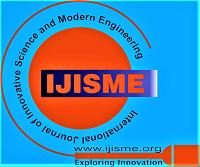Article,
Analysis of Mathematical Communication Ability of Junior High School Students in Learning using Three-Dimensional Teaching Materials
International Journal of Innovative Science and Modern Engineering (IJISME), 5 (9): 7-11 (December 2018)
Abstract
The purpose of this study was to describe the mathematical communication abilty of grade VII students after they were in Mathematics learning in the classroom using media in the form of three-dimensional teaching materials. The method used in this study is a descriptive qualitative method with research subjects in grade VII students in building material that includes: Beams, Cubes, Pyramid, Prisms, Cones, Tubes, and Balls. The auxiliary instruments in this study were interview sheets, and the problem of mathematical communication test. From the results of the analysis of the answers and the results of interviews with the subjects, it can be concluded that: (1) students with high mathematical communication abilities meet all the existing indicators, namely the ability to write about stories or events in everyday life into mathematical models, the ability to explain ideas mathematically both verbally and in writing, and the ability to pour mathematical ideas into pictures; (2) students with moderate mathematical communication abilities are fulfilling two indicators from three indicators, namely: the ability to write questions about stories or events in everyday life into mathematical models, and the ability to explain mathematical ideas orally and in writing; (3) students with low mathematical communication skills only fulfill one indicator, namely the ability to write questions about stories or events in everyday life into mathematical models.
